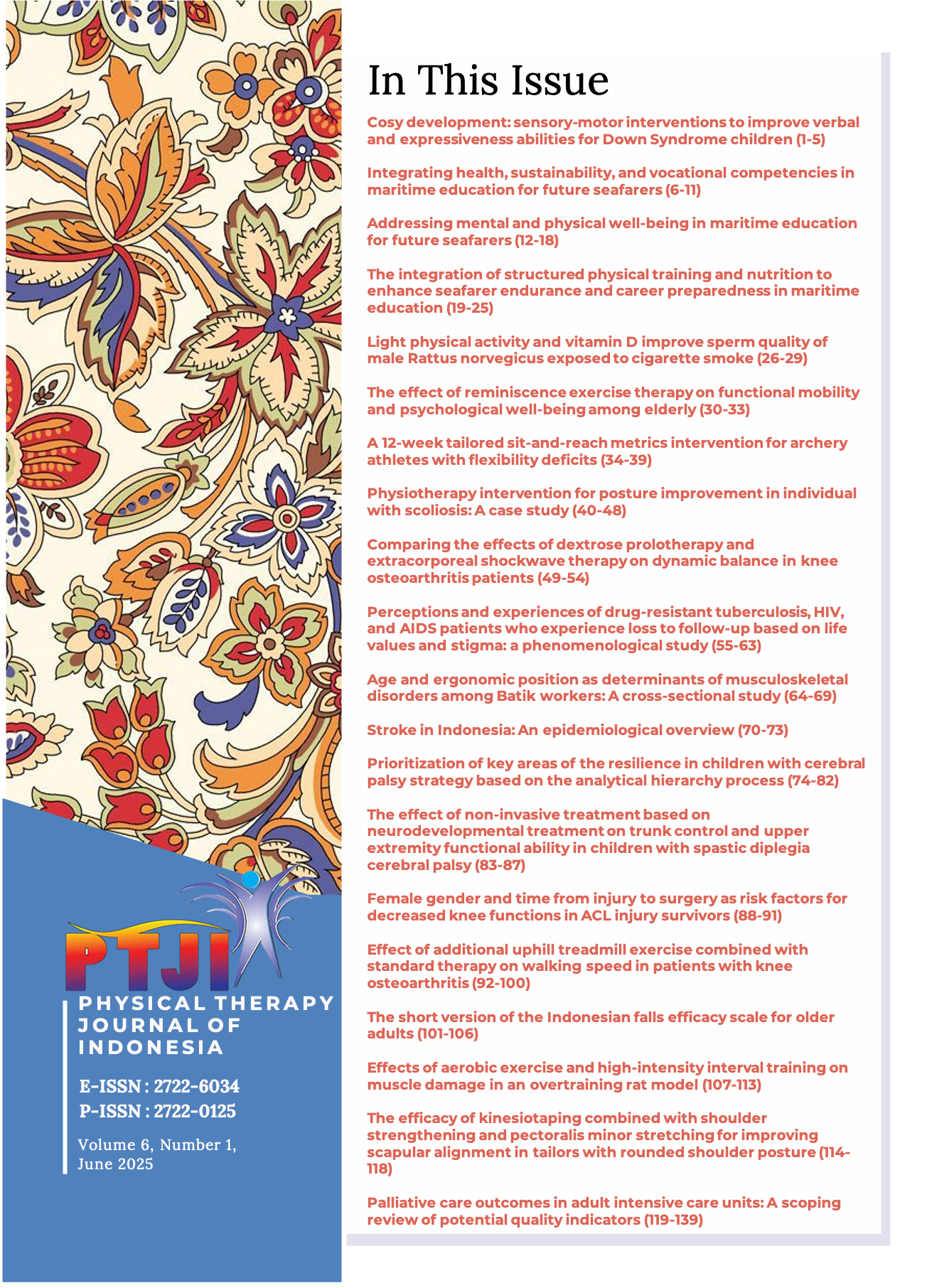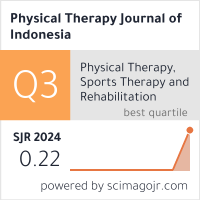The efficacy of kinesiotaping combined with shoulder strengthening and pectoralis minor stretching for improving scapular alignment in tailors with rounded shoulder posture
Abstract
Background: Rounded shoulder posture is marked by forward displacement of the shoulders from their neutral position, commonly caused by prolonged poor sitting habits. Clinically, it manifests as shoulder or scapular pain, restricted range of motion, and increased stiffness of the pectoralis minor. This study aimed to compare the effectiveness of adding kinesiotaping to a shoulder strengthening and pectoralis minor stretching program with that of a conventional exercise therapy protocol commonly used as standard treatment.
Methods: This experimental study used a pretest-posttest two-group design involving 42 respondents selected through purposive sampling. The sample was divided into intervention (shoulder strengthening and pectoralis minor stretching exercises + kinesiotaping) and control (shoulder strengthening and pectoralis minor stretching exercises) groups, and the data were analyzed using an independent sample t-test.
Results: Paired sample t-test analysis in the kinesiotaping and strengthening group showed a significant result (p=0.000). Independent sample t-test revealed significant differences between groups for right scapular alignment (p=0.000) and left scapular alignment (p=0.035), indicating that adding kinesiotaping significantly improved scapular alignment compared to strengthening and pectoralis minor stretching alone.
Conclusion: Both intervention and control groups improved scapular alignment in tailors. However, the intervention group showed a greater effect than control group.








3.gif)

